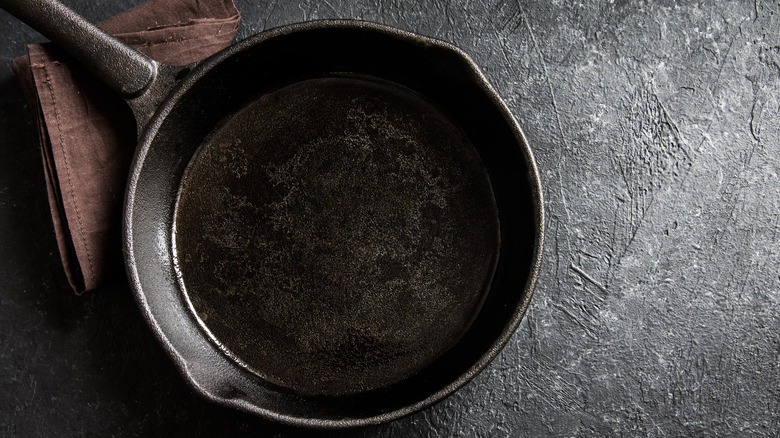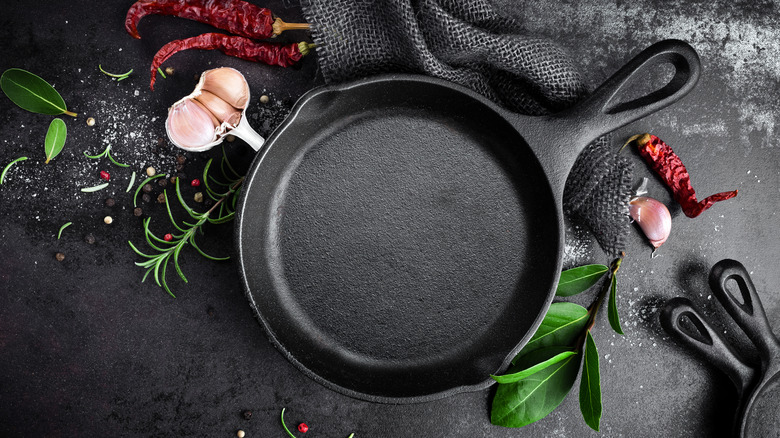Here's How Often You Should Re-Season A Cast Iron Pan
If you are here flush with worry that you have not been re-seasoning your cast iron pan enough, let us first reassure you that it's almost certainly okay. Cast iron pans have a reputation as a high-maintenance cooking tool, subject to all sorts of arcane rules that will ruin your pan forever if you don't follow them. Luckily, that's not the case. As Serious Eats notes, many cast iron "rules," like never using soap to clean it or never using metal utensils with it, are pretty much bunk. Cast iron is a tough, resilient substance, and that's part of its appeal.
That doesn't mean there are no rules you should follow, just that they are a lot simpler and more forgiving than many would have you believe. The most crucial part of cast iron care is seasoning, which Taste Of Home states is the layer of oil that one intentionally glazes the pan with or forms through repeated use. Seasoning is the key to a properly functioning cast iron because it protects the surface against wear and ensures that it stays non-stick. Some cast iron brands come pre-seasoned, while other pans will require you to do it yourself, but every cast iron pan occasionally needs re-seasoning to build that protective coat back up. Thankfully you don't have to do it too often.
You only need to re-season cast iron a few times a year
Even if you care for your cast iron perfectly, all the different uses you are getting out of your skillet are sure to take their toll. According to America's Test Kitchen, a little re-seasoning can help bring it back to a nearly-new condition with only a few minutes of work. Food & Wine notes that this should only be necessary about twice a year. If you aren't sure if your pan needs to be re-seasoned yet, a good way to check is by frying an egg. After heating some oil over medium heat for a few minutes, an egg should be able to cook in a well-seasoned pan without sticking. If it does give you problems, it's time for a re-season.
The seasoning process itself is not hard. You just want to apply a thin layer of oil to a cleaned-out pan, then put it in the oven at 400-degree Fahrenheit for an hour. NYT's Wirecutter notes that you should stick with neutral oils with a high smoke point, like vegetable or canola. Olive oil should be avoided because it starts breaking down at a lower temperature and can impart an unpleasant flavor to your pan. Beyond that precaution, re-seasoning is a quick and easy routine procedure and one you only need to worry about as frequently as a trip to the dentist.

